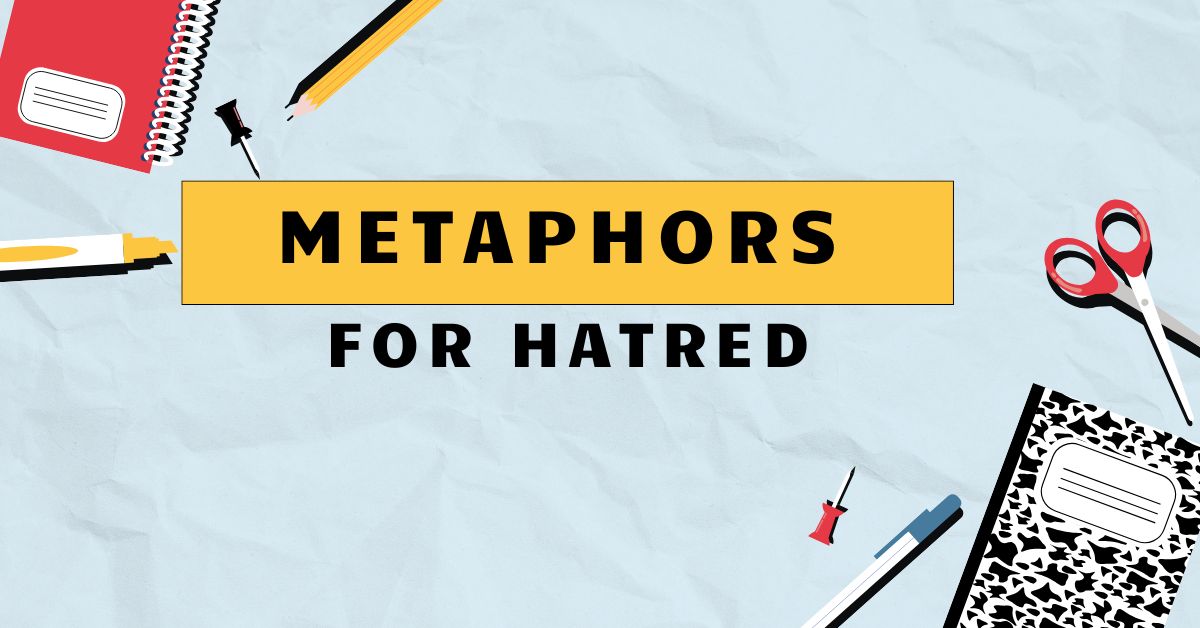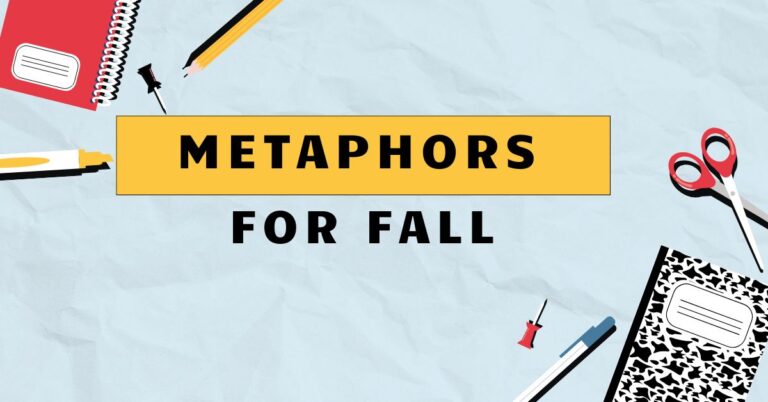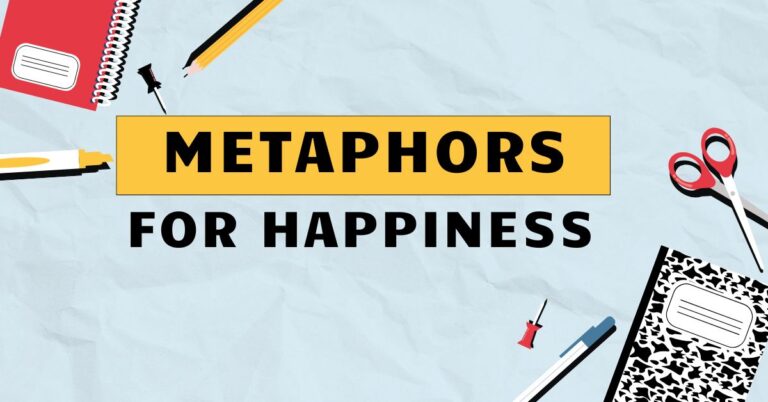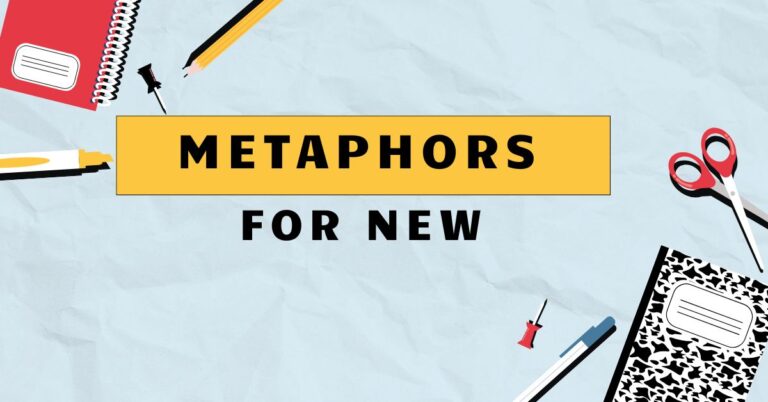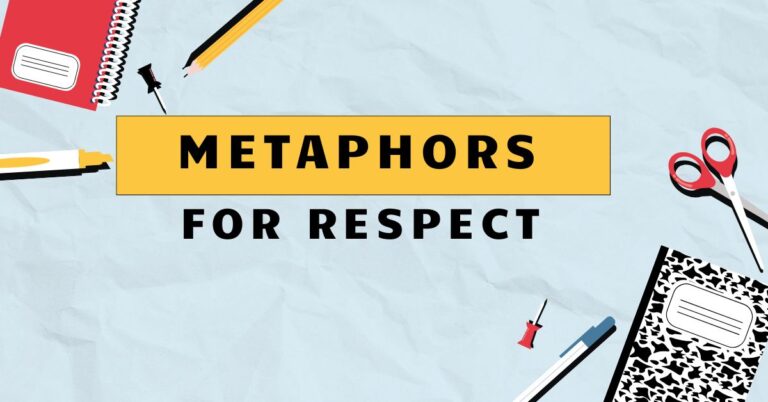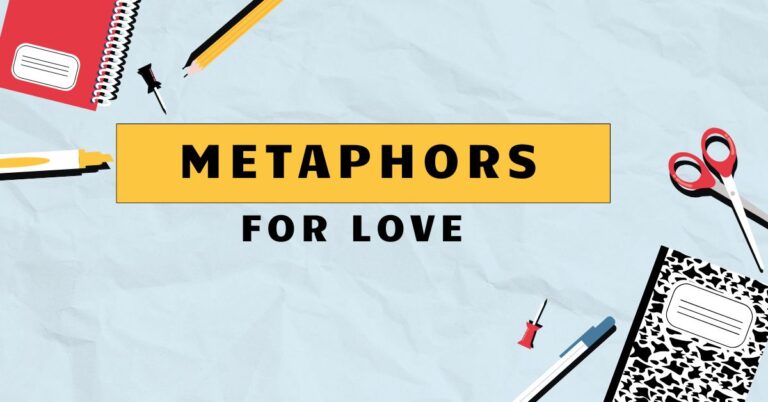31 Metaphors for Hatred: Understanding Figurative Language
Understanding how hatred is expressed through metaphors is crucial for interpreting literature, analyzing rhetoric, and comprehending the nuances of human emotion. Metaphors, as indirect comparisons, allow us to grasp the intensity and complexity of hatred by associating it with more tangible or relatable concepts.
This article explores the various types of metaphors used to describe hatred, their structural components, and how they function within the English language. This guide is beneficial for students, writers, and anyone interested in improving their understanding of figurative language and emotional expression.
Table of Contents
- Definition of Metaphors for Hatred
- Structural Breakdown of Hatred Metaphors
- Types and Categories of Hatred Metaphors
- Examples of Metaphors for Hatred
- Usage Rules for Metaphors of Hatred
- Common Mistakes When Using Hatred Metaphors
- Practice Exercises
- Advanced Topics in Hatred Metaphors
- Frequently Asked Questions
- Conclusion
Definition of Metaphors for Hatred
A metaphor is a figure of speech that directly compares two unrelated things, asserting that they are the same for rhetorical effect. Unlike similes, which use “like” or “as” to make a comparison, metaphors imply a direct equivalence.
Metaphors for hatred use this technique to describe the intense emotion of hatred by associating it with something else that evokes similar feelings or characteristics. These metaphors help to convey the depth, intensity, and destructive nature of hatred in a vivid and relatable way.
Understanding these metaphors enhances our ability to interpret complex expressions of emotion in literature, speeches, and everyday conversations.
In essence, metaphors for hatred function as a bridge between the abstract concept of intense dislike and more concrete, understandable images. This figurative language allows speakers and writers to evoke powerful emotions in their audience, making the abstract feeling of hatred more accessible and impactful.
The effectiveness of a metaphor lies in its ability to resonate with the audience’s experiences and understanding. A well-chosen metaphor can transform a simple statement into a profound and memorable expression.
Structural Breakdown of Hatred Metaphors
The structure of a metaphor for hatred typically involves two key components: thetenorand thevehicle. The tenor is the subject being described (in this case, hatred), while the vehicle is the object or concept used to describe the tenor.
The connection between the tenor and vehicle is not literal but based on shared characteristics or associations. Understanding this structure is essential for both creating and interpreting metaphors.
For example, in the metaphor “Hatred is a consuming fire,” thetenoris “hatred” and thevehicleis “a consuming fire.” The shared characteristic is the destructive nature of both hatred and fire. The fire consumes everything in its path, just as hatred can consume a person’s thoughts, actions, and relationships.
This structural understanding allows us to dissect and appreciate the power of such figurative language.
Furthermore, the effectiveness of a metaphor often depends on the context in which it is used. The surrounding words and phrases can enhance or diminish the impact of the metaphor.
A metaphor that resonates in one context might fall flat in another. Therefore, careful consideration of the audience and the overall message is crucial when employing metaphors for hatred.
Types and Categories of Hatred Metaphors
Metaphors for hatred can be categorized based on the type of imagery they employ. These categories provide a framework for understanding the different ways in which hatred can be expressed figuratively.
Elemental Metaphors
Elemental metaphors use natural elements such as fire, water, and storms to represent hatred. These metaphors often highlight the destructive, uncontrollable, or overwhelming nature of hatred.
Animalistic Metaphors
Animalistic metaphors compare hatred to the behavior or characteristics of animals, often those perceived as aggressive, predatory, or venomous. These metaphors can emphasize the primal, instinctual, and often irrational aspects of hatred.
Disease Metaphors
Disease metaphors portray hatred as a sickness that spreads and contaminates, affecting individuals and communities. These metaphors underscore the insidious and corrupting influence of hatred.
Darkness Metaphors
Darkness metaphors associate hatred with darkness, shadows, and the absence of light. These metaphors highlight the hidden, sinister, and morally questionable nature of hatred.
Violent Metaphors
Violent metaphors depict hatred as a form of aggression, conflict, or destruction. These metaphors emphasize the harmful and devastating consequences of hatred.
Examples of Metaphors for Hatred
The following tables provide examples of metaphors for hatred, categorized by type. Each example illustrates how a specific image or concept is used to convey the intensity and nature of hatred.
The first table focuses on elemental metaphors, showcasing how natural forces are used to depict the raw power and destructiveness of hatred.
| Metaphor | Explanation |
|---|---|
| Hatred is a consuming fire. | Hatred is likened to a fire that devours everything in its path. |
| His hatred was a raging storm within him. | Hatred is portrayed as a violent and uncontrollable storm. |
| Her heart was a frozen wasteland of hatred. | Hatred is depicted as a barren and desolate landscape. |
| The hatred flowed like a toxic river. | Hatred is compared to a poisonous river, contaminating everything it touches. |
| His words were acid, fueled by hatred. | Hatred is expressed through corrosive language. |
| Hatred simmered beneath the surface like a dormant volcano. | Implies a hidden, brewing, and potentially explosive hatred. |
| The community drowned in a sea of hatred. | Depicts hatred as an overwhelming and engulfing force. |
| His hatred was an unquenchable thirst. | Portrays hatred as a never-ending, insatiable desire. |
| Hatred is the winter of the soul. | Associates hatred with coldness, barrenness, and emotional death. |
| The city was scorched by the flames of hatred. | Depicts widespread destruction and devastation caused by hatred. |
| His hatred was as deep as the ocean. | Emphasizes the vastness and immeasurable depth of hatred. |
| Hatred eroded their bond like relentless rain. | Portrays hatred as a gradual, destructive force. |
| Her eyes flashed with the lightning of hatred. | Depicts a sudden and intense burst of anger and loathing. |
| Hatred choked the life out of their relationship like a weed. | Compares hatred to a persistent and suffocating force. |
| His heart was a desert, parched by hatred. | Depicts emotional emptiness and desolation caused by hatred. |
| The hatred was a wildfire, spreading uncontrollably. | Emphasizes the rapid and destructive spread of hatred. |
| Hatred seeped into their lives like a slow poison. | Portrays hatred as a subtle yet deadly influence. |
| His soul was a battlefield, ravaged by the storm of hatred. | Depicts internal conflict and devastation caused by hatred. |
| Hatred was the earthquake that shattered their foundation. | Highlights the sudden and catastrophic impact of hatred. |
| The hatred was a dark cloud hanging over their lives. | Depicts a sense of gloom, foreboding, and oppression. |
| His hatred was a tidal wave, sweeping away all reason. | Portrays hatred as an overwhelming and unstoppable force. |
| Hatred was the flood that destroyed their trust. | Emphasizes the devastating impact of hatred on relationships. |
| His anger was a furnace, fueled by years of hatred. | Depicts a long-burning and intense rage. |
| Hatred was the abyss that swallowed their compassion. | Portrays hatred as a consuming and destructive force. |
This next table provides examples of animalistic metaphors, illustrating how animalistic traits are used to convey the primal and often irrational nature of hatred.
| Metaphor | Explanation |
|---|---|
| His hatred was like a viper, ready to strike. | Hatred is compared to a venomous snake, poised to attack. |
| She felt the hatred gnawing at her like a rat. | Hatred is depicted as a persistent and destructive force. |
| Their hatred was a pack of wolves, tearing at their unity. | Hatred is portrayed as a collective and savage force. |
| He spat out his hatred like venom. | Hatred is expressed through poisonous words and actions. |
| Hatred burrowed into his heart like a tick. | Hatred is depicted as a parasitic and unwelcome presence. |
| Her hatred was a caged beast, struggling to break free. | Implies a suppressed but powerful and dangerous hatred. |
| They circled each other like predators, fueled by hatred. | Depicts a tense and hostile confrontation. |
| His hatred was a hawk, swooping down on its prey. | Portrays hatred as a swift and merciless attack. |
| Hatred slithered through the community like a snake. | Depicts hatred as a sneaky and insidious influence. |
| Their hatred was a swarm of locusts, devouring everything in its path. | Emphasizes the destructive and overwhelming nature of hatred. |
| His eyes gleamed with the coldness of a reptile’s hatred. | Depicts a calculating and emotionless form of hatred. |
| Hatred clawed at his soul like a wildcat. | Portrays hatred as a fierce and relentless attack. |
| She hissed her hatred like a cornered cat. | Depicts a defensive and aggressive expression of hatred. |
| Their hatred was a pack of hyenas, feeding on their failures. | Compares hatred to scavengers exploiting vulnerabilities. |
| His heart was a nest of vipers, filled with hatred. | Depicts a heart consumed by venomous and destructive emotions. |
| Hatred stalked him like a relentless predator. | Emphasizes the persistent and inescapable nature of hatred. |
| Their hatred was a pit of snakes, festering in the darkness. | Portrays hatred as a hidden and venomous force. |
| His soul was a jungle, teeming with the beasts of hatred. | Depicts a chaotic and dangerous inner world consumed by hatred. |
| Hatred perched on his shoulder like a raven, whispering dark thoughts. | Highlights the constant and insidious influence of hatred. |
| Their hatred was a swarm of bees, stinging at every opportunity. | Depicts a constant and irritating barrage of negativity. |
| His hatred was a lion, roaring with fury. | Portrays hatred as a powerful and intimidating force. |
| Hatred gnawed at their friendship like termites. | Emphasizes the subtle but destructive nature of hatred. |
| Their hearts were like dens of wolves, filled with savage hatred. | Depicts a heart consumed by primal and aggressive emotions. |
| His hatred was a spider, weaving a web of deceit. | Portrays hatred as a manipulative and trapping force. |
The third table showcases disease metaphors, illustrating how hatred is portrayed as a sickness that corrupts and spreads.
| Metaphor | Explanation |
|---|---|
| Hatred is a disease that infects the soul. | Hatred is likened to a sickness that contaminates and weakens. |
| His hatred was a tumor, growing larger each day. | Hatred is depicted as an abnormal and destructive growth. |
| The hatred spread like a virus through the community. | Hatred is portrayed as a contagious and rapidly spreading illness. |
| Her heart was poisoned by hatred. | Hatred is depicted as a toxic substance that corrupts. |
| Hatred festered in his mind like an open wound. | Hatred is portrayed as an infected and painful sore. |
| The hatred was a plague, decimating their society. | Hatred is depicted as a widespread and devastating epidemic. |
| His soul was ravaged by the cancer of hatred. | Portrays hatred as a malignant and destructive force. |
| Hatred was a parasite, feeding on their compassion. | Depicts hatred as a weakening and exploitative influence. |
| The community was sick with the disease of hatred. | Emphasizes the widespread and debilitating impact of hatred. |
| His heart was a breeding ground for the germs of hatred. | Depicts a heart that nurtures and spreads hateful emotions. |
| Hatred corroded their relationship like a corrosive acid. | Portrays hatred as a destructive and deteriorating force. |
| Their minds were infected with the virus of hatred. | Depicts a widespread and contagious spread of hateful thoughts. |
| His soul was scarred by the wounds of hatred. | Portrays lasting emotional damage caused by hatred. |
| Hatred was a malignant growth, consuming their humanity. | Depicts hatred as a destructive force that erodes compassion. |
| The community was plagued by the epidemic of hatred. | Emphasizes the pervasive and destructive impact of hatred. |
| His heart was a hospital ward, filled with the sickened souls of hatred. | Depicts a heart overwhelmed by painful and hateful emotions. |
| Hatred was a spreading infection, poisoning everything it touched. | Portrays hatred as a contaminating and destructive influence. |
| Their souls were corroded by the acid of hatred. | Depicts emotional and spiritual decay caused by hatred. |
| His mind was a petri dish, cultivating the bacteria of hatred. | Portrays a mind that actively nurtures and spreads hateful thoughts. |
| Hatred was a contagious disease, spreading from person to person. | Emphasizes the infectious and pervasive nature of hatred. |
This table presents examples of darkness metaphors, demonstrating how hatred is associated with shadows, obscurity, and moral depravity.
| Metaphor | Explanation |
|---|---|
| Hatred is a dark shadow that follows him everywhere. | Hatred is likened to a constant and oppressive presence. |
| His heart was filled with the darkness of hatred. | Hatred is depicted as a void of goodness and light. |
| Hatred lurked in the shadows of their minds. | Portrays hatred as a hidden and sinister influence. |
| The darkness of hatred consumed his soul. | Depicts hatred as a force that obliterates goodness and light. |
| His eyes were black with hatred. | Portrays a gaze filled with intense malice and animosity. |
| Hatred shrouded their hearts in darkness. | Depicts hatred as a force that conceals compassion and empathy. |
| His soul was a dark abyss, filled with hatred. | Portrays a soul consumed by an immeasurable depth of hatred. |
| Hatred cast a long shadow over their lives. | Depicts a pervasive and oppressive influence of hatred. |
| Their hearts were like dark caves, filled with the echoes of hatred. | Portrays hearts that resonate with hateful emotions. |
| His hatred was a black cloud, obscuring all hope. | Depicts hatred as a force that blocks out optimism and positivity. |
| Hatred was the darkness that extinguished their love. | Portrays hatred as a force that destroys affection and connection. |
| His soul was a night sky, devoid of the stars of compassion. | Depicts a soul lacking in empathy and kindness. |
| Hatred was the shadow that haunted their memories. | Portrays hatred as a lingering and painful presence. |
| His heart was a dark room, filled with the secrets of hatred. | Depicts a heart that harbors hidden and malevolent emotions. |
| Hatred was the eclipse that blocked out the light of their joy. | Portrays hatred as a force that obscures happiness and fulfillment. |
The final table presents violent metaphors, illustrating how hatred is expressed through images of aggression, conflict, and destruction.
| Metaphor | Explanation |
|---|---|
| Hatred is a weapon used to destroy. | Hatred is likened to a tool of aggression and devastation. |
| His words were bullets, fired with hatred. | Hatred is expressed through harmful and destructive language. |
| The hatred tore them apart like a bomb. | Hatred is depicted as an explosive and fragmenting force. |
| Her anger was a sword, cutting through their bond. | Hatred is portrayed as a sharp and severing force. |
| Hatred was a war waged within his soul. | Hatred is depicted as an internal conflict and struggle. |
| Their hatred was a battleground, littered with casualties. | Portrays hatred as a site of conflict and destruction. |
| His words were knives, stabbing at their hearts. | Depicts hurtful and damaging language. |
| Hatred was a siege, weakening their resolve. | Portrays hatred as a persistent and debilitating attack. |
| Their relationship was shattered by the explosion of hatred. | Depicts a sudden and destructive end to a connection. |
| His hatred was a wrecking ball, demolishing their trust. | Portrays hatred as a force that destroys confidence and faith. |
| Hatred was a minefield, waiting to explode. | Depicts a situation fraught with hidden dangers and potential conflict. |
| His anger was a battering ram, breaking down their defenses. | Portrays anger as a relentless and forceful assault. |
| Hatred was a guillotine, severing their ties. | Depicts a swift and decisive end to a relationship. |
| Their lives were scarred by the shrapnel of hatred. | Portrays lasting emotional damage caused by hatred. |
| His hatred was a chainsaw, tearing through their friendship. | Depicts a brutal and destructive end to a bond. |
Usage Rules for Metaphors of Hatred
When using metaphors for hatred, it’s important to ensure they are both effective and appropriate. The key rules to consider include:
- Clarity: The metaphor should be understandable and relatable to the audience.
- Relevance: The vehicle should have a clear connection to the tenor (hatred).
- Consistency: Avoid mixing metaphors that create conflicting images.
- Context: Ensure the metaphor is appropriate for the tone and context of the writing or speech.
- Originality: Strive for fresh and imaginative metaphors that avoid clichés.
Adhering to these rules will help you create metaphors that effectively convey the intensity and nature of hatred without being confusing, inappropriate, or trite.
Common Mistakes When Using Hatred Metaphors
Several common mistakes can undermine the effectiveness of metaphors for hatred. These include:
- Mixed Metaphors: Combining unrelated images that create a confusing or nonsensical picture.
- Incorrect: “His hatred was a consuming fire that nipped at his heels.”
- Correct: “His hatred was a consuming fire.”
- Clichés: Overusing tired and unoriginal metaphors that have lost their impact.
- Incorrect: “Hatred is a bitter pill to swallow.”
- Correct: “Hatred was the poison that seeped into their well of compassion.”
- Inappropriate Tone: Using metaphors that are too light or humorous for the serious subject of hatred.
- Incorrect: “His hatred was like a grumpy kitten.”
- Correct: “His hatred was like a caged beast, desperate to break free.”
- Lack of Clarity: Using metaphors that are too abstract or obscure for the audience to understand.
- Incorrect: “Hatred is a glorp.”
- Correct: “Hatred is a venomous serpent, coiled in the heart.”
Avoiding these common mistakes will help you use metaphors for hatred more effectively and powerfully.
Practice Exercises
Test your understanding of metaphors for hatred with these exercises. Identify the type of metaphor used in each sentence and explain its meaning.
Exercise 1: Identifying Metaphor Types
| Question | Answer |
|---|---|
| 1. His hatred was a viper coiled in his heart. | Animalistic: Hatred is compared to a venomous snake. |
| 2. The town was drowning in a sea of hatred. | Elemental: Hatred is compared to an overwhelming body of water. |
| 3. Hatred is a disease that festers in the soul. | Disease: Hatred is compared to a sickness that contaminates. |
| 4. The darkness of hatred enveloped his mind. | Darkness: Hatred is compared to the absence of light and goodness. |
| 5. Her anger was a sword, cutting through his defenses. | Violent: Hatred is compared to a weapon of aggression. |
| 6. Their hatred was a wildfire, consuming their community. | Elemental: Hatred is compared to an uncontrollable and destructive fire. |
| 7. His soul was a desert, parched by hatred. | Elemental: Hatred is compared to a barren and desolate landscape. |
| 8. Hatred gnawed at his heart like a rat. | Animalistic: Hatred is compared to a destructive rodent. |
| 9. The hatred spread like a plague, decimating their society. | Disease: Hatred is compared to a widespread and deadly epidemic. |
| 10. His words were bullets, fired with hatred. | Violent: Hatred is compared to projectiles used for aggression. |
Exercise 2: Creating Metaphors
Complete the following sentences by creating an appropriate metaphor for hatred.
| Question | Answer |
|---|---|
| 1. His hatred was like ______. | His hatred was like a venomous snake, ready to strike. |
| 2. The hatred spread like ______. | The hatred spread like a rapidly spreading virus. |
| 3. Her heart was filled with ______. | Her heart was filled with the darkness of hatred. |
| 4. Their words were ______, filled with hatred. | Their words were daggers, filled with hatred. |
| 5. Hatred is ______. | Hatred is a consuming fire that devours all compassion. |
| 6. The community was ______, because of hatred. | The community was fractured, because of hatred. |
| 7. His soul was ______, because of hatred. | His soul was poisoned, because of hatred. |
| 8. The relationship was ______, because of hatred. | The relationship was fractured, because of hatred. |
| 9. Their minds were ______, because of hatred. | Their minds were clouded, because of hatred. |
| 10. Hatred is a ______. | Hatred is a dark shadow. |
Advanced Topics in Hatred Metaphors
For advanced learners, exploring the cultural and historical contexts of metaphors for hatred can provide deeper insights. Different cultures and historical periods may use different metaphors to express hatred, reflecting their unique values, beliefs, and experiences.
Analyzing these variations can reveal fascinating aspects of human psychology and societal dynamics.
Additionally, studying the use of metaphors for hatred in political rhetoric and propaganda can provide a critical understanding of how language is used to manipulate emotions and influence public opinion. Recognizing these techniques is essential for critical thinking and informed decision-making.
Frequently Asked Questions
- What is the difference between a metaphor and a simile?
A metaphor directly equates two unrelated things, while a simile uses “like” or “as” to make a comparison. For example, “Hatred is a fire” is a metaphor, while “Hatred is like a fire” is a simile.
- Why are metaphors for hatred so powerful?
Metaphors for hatred are powerful because they tap into our emotions and imagination, allowing us to grasp the intensity and destructiveness of hatred in a vivid and relatable way. They evoke strong images and associations that resonate with our experiences.
- How can I avoid using clichés when creating metaphors for hatred?
To avoid clichés, strive for originality by thinking outside the box and exploring unusual or unexpected connections between hatred and other concepts. Consider using sensory details and vivid imagery to create fresh and impactful metaphors.
- What role does context play in the effectiveness of a metaphor for hatred?
Context is crucial because it influences how the audience interprets the metaphor. A metaphor that resonates in one context might fall flat in another. Consider the audience’s background, values, and experiences when choosing a metaphor.
- Can metaphors for hatred be used in a positive way?
While metaphors for hatred typically convey negative emotions, they can be used in a positive way to highlight the importance of overcoming hatred or to emphasize the strength of those who resist it. However, this requires careful consideration and sensitivity.
- How do different cultures influence the metaphors used for hatred?
Different cultures have unique values, beliefs, and experiences that shape the metaphors they use for hatred. For example, a culture that values harmony might use metaphors that emphasize the disruptive nature of hatred, while a culture that values strength might use metaphors that emphasize the destructive power of hatred.
- What are some common themes in metaphors for hatred across different cultures?
Some common themes include the destructive nature of hatred, its ability to spread and contaminate, its association with darkness and evil, and its impact on relationships and communities. However, the specific images and concepts used to express these themes may vary.
- How can analyzing metaphors for hatred help us understand political rhetoric?
Analyzing metaphors for hatred in political rhetoric can reveal how language is used to manipulate emotions, demonize opponents, and justify violence. It can help us identify persuasive techniques and challenge harmful narratives.
- What is the importance of clarity when using metaphors for hatred?
Clarity is essential to ensure that the audience understands the intended meaning of the metaphor. If the metaphor is too abstract or obscure, it may confuse or alienate the audience, undermining its effectiveness.
- How can I improve my ability to create effective metaphors for hatred?
To improve your ability to create effective metaphors, practice observing the world around you and identifying connections between different concepts. Read widely, paying attention to the metaphors used by skilled writers. Experiment with different images and ideas, and seek feedback from others.
Conclusion
Understanding metaphors for hatred is essential for interpreting complex expressions of emotion, analyzing rhetorical strategies, and appreciating the nuances of language. By recognizing the different types of metaphors used to describe hatred, their structural components, and the rules governing their use, you can enhance your ability to communicate effectively and critically analyze the messages you encounter.
Paying attention to the cultural and historical contexts of these metaphors can further enrich your understanding.
Remember to strive for clarity, relevance, and originality when using metaphors for hatred. Avoid clichés and mixed metaphors, and always consider the tone and context of your writing or speech.
By mastering these skills, you can harness the power of figurative language to express the intensity and complexity of hatred in a meaningful and impactful way. Continue to practice and explore the rich tapestry of metaphors to become a more skilled and insightful communicator.

